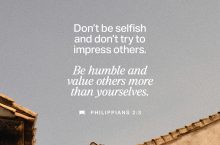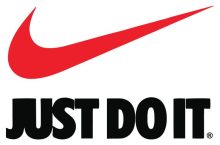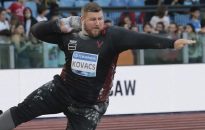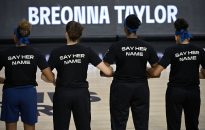Within a span of 48 hours, FIFA revealed a $1 billion (£1.3 billion) broadcasting agreement with DAZN for the upcoming Club World Cup next year and conducted the draw for the tournament during a bizarre event in Miami that featured a video address from U.S. President-elect Donald Trump. This arrangement with DAZN ensures that all […]

Within a span of 48 hours, FIFA revealed a $1 billion (£1.3 billion) broadcasting agreement with DAZN for the upcoming Club World Cup next year and conducted the draw for the tournament during a bizarre event in Miami that featured a video address from U.S. President-elect Donald Trump.
This arrangement with DAZN ensures that all 63 matches slated for next summer will be available for free globally, aiming to draw in as many spectators as possible to the inaugural event of the redesigned Club World Cup, scheduled to take place in 11 cities from June 14 to July 13.
 GO DEEPERClub World Cup 2025: Group tables, how teams qualified and the full fixture list
GO DEEPERClub World Cup 2025: Group tables, how teams qualified and the full fixture list
The Athletic analyzes FIFA’s agreement with DAZN and the implications of the $1 billion deal for the clubs participating next summer…
How is DAZN financing the rights?
DAZN, owned by Sir Len Blavatnik, a billionaire born in Ukraine and now a British-American, has stated that the $1 billion is being financed internally rather than sourced from an external party. Industry speculation suggests that DAZN might be discussing a potential stake sale to Saudi Arabia’s Public Investment Fund (PIF).
Advertisement
However, in October, a spokesperson from PIF denied such claims, informing Reuters that they are “not currently in discussions with DAZN” and have “no present intentions to invest in the company.”
Nonetheless, DAZN has reported massive financial losses over time. According to their latest published figures (2022), they recorded operating losses of $1 billion. DAZN claims to have brought in $3.2 billion in revenue for 2023 and cited an average annual revenue growth of over 50 percent from 2020 to 2023.
These revenues do not alleviate the vast amounts of money they are losing, which raises questions about the rationale behind their exclusive broadcasting rights deal with FIFA for the Club World Cup when contemplating the company’s long-term strategy.
Do the rights actually hold that value?
On the red carpet after the draw, Paris Saint-Germain president Nasser Al-Khelaifi affirmed that FIFA’s agreement with DAZN is valued at $1 billion, labeling it an “astounding deal for a single tournament.” He further remarked: “That’s excellent news for the clubs, for the competition.”
Thursday evening, Infantino asserted that the tournament is projected to attract five billion viewers. The FIFA president clearly has ambitious targets, especially with his claim that four million attendees are expected to come to the U.S. for the 32-team competition.
“Is it justified?” questions Francois Godard, a senior analyst in media and telecommunications at Enders Analysis. “It’s a bold deal. While it provides a superb marketing opportunity for DAZN, as viewers will need to register on their platform to access the matches.
“They will advertise against this and increase their visibility among football fans in the U.S., where they have been mainly linked to boxing. It’s a strategic investment aimed at expanding their subscriber base and enhancing their brand.
“This tournament occurs at a time when no European football is happening, serving as a pathway for football followers. Additionally, it coincides with a period where DAZN often experiences subscriber losses as the football season concludes, thus offering a prime chance to engage viewers.”

(Eva Marie Uzcategui – FIFA/FIFA via Getty Images)
Will they recuperate the funds from advertisers?
DAZN is optimistic about this prospect, yet they did not provide comments on whether discussions with potential advertisers have commenced.
The streaming service highlighted that a primary reason for acquiring these rights is to enhance their profile within the United States, while also aiming to expand in other burgeoning markets. They hope that millions of viewers, both in the U.S. and globally, will input their email addresses on DAZN’s platform as they sign up to watch the tournament for free.
Advertisement
One way to begin recuperating their investment will be through ad placements during their broadcasts, which could also entail sponsorship of specific elements of their coverage, such as their FanZone — an interactive feature enabling fans to communicate during live events.
“It’s an ambitious goal,” Godard comments when asked whether he thinks they can reclaim their investment through selling advertising rights.
“I must point out that the advertising market in the U.S. isn’t in decline. In Europe, though, it’s a mixed bag — some markets are increasing while others are decreasing. Bringing in an audience will facilitate ad sales, but that also hinges on pricing and the overall viewership figures.
“DAZN will establish a higher profile in markets where they haven’t traditionally been strong, like the UK and the US, but the offerings they have in the UK, for instance, aren’t particularly premium.”
Were there any other competitors for the rights?
FIFA had earlier engaged in discussions with Apple TV regarding an exclusive broadcasting contract, but a consensus could not be reached, leading to a breakdown of talks earlier this year. Consequently, Infantino convened an emergency meeting with television executives to solidify a deal as the date for the Club World Cup drew near.
The governing body of world football faced criticism from broadcasters for having excessively optimistic expectations concerning the pricing they sought compared to the perceptions held by TV executives.
Concerns also arose among broadcasters regarding the audience’s level of familiarity with the Club World Cup, compounded by the absence of several major teams, including Manchester United, Liverpool, and Barcelona, from the competition.
It would be inaccurate to assert that broadcaster interest was nonexistent; considerable interest was present, but they weren’t willing to pay exorbitantly for a product lacking historical audience data and any proof of its potential appeal.
Advertisement
With a broadcasting agreement now in place, Infantino will want the commercial partnerships surrounding the Club World Cup to accelerate, especially after what has been a protracted process.
At present, only Hisense (a Chinese electronics company), AB InBev (a U.S. brewing giant), and the Bank of America have committed to sponsor next summer’s event.
Is DAZN a recognized platform in the United States?
The U.S. market is crowded with streaming platforms, yet DAZN is not a well-known name for the majority of Americans. There are several reasons for this. First, the content that DAZN provides is relatively niche for U.S. audiences. Boxing enthusiasts are quite familiar with DAZN, but boxing doesn’t garner wide appeal in the U.S.
A match between York and Maidenhead from the National League, for instance, isn’t likely to attract many viewers. What about darts? Or the East Asia Super League basketball tournament? While women’s football is gaining popularity globally, DAZN targets a limited, dedicated audience with its coverage of Italy’s Serie A Women and Spain’s Liga F.
The platform’s original programming, like the much-publicized documentary about Brazil’s Ronaldo Nazario, El Fenomeno, was a major endeavor, but how many people in the U.S. viewed the trailer without ultimately subscribing to see the full content?

(Pressefoto Ulmerullstein bild via Getty Images)
The reality is that numerous options exist in the U.S. for sports and entertainment content. Americans have never had it so good, particularly regarding football. Almost every top European league, especially the top five, is easily accessible to consumers. South American tournament football is viewable with the appropriate cable or streaming package, and networks like CBS Sports and Paramount Plus also provide English coverage of the Argentine, Brazilian leagues, and Serie A.
 GO DEEPERInside CBS’s Champions League coverage: ‘Henry gets asked about it more than Arsenal’
GO DEEPERInside CBS’s Champions League coverage: ‘Henry gets asked about it more than Arsenal’
Hence, the issue is not access; it’s more about convenience and cost. For example, the Premier League is broadcast exclusively on NBC in the U.S. However, the matches are distributed across NBC’s affiliated channels alongside the network’s paid streaming service, Peacock, making it difficult to find specific games.
Advertisement
Are you a Bundesliga enthusiast? You’ll need to subscribe to ESPN+. Passionate MLS supporters and followers of Lionel Messi must pay for the MLS Season Pass on Apple TV – which requires a separate subscription. This all adds up (for those willing to pay) along with platforms like Netflix and Prime Video, both of which are pushing aggressively into the sports arena with NFL programming.
DAZN’s offer of the Club World Cup at no charge will attract consumers who are already subscribing to various streaming services. This is one way to entice customers onto their platform. However, the surge in access has resulted in content overload, with simply too many choices available. DAZN is arriving late to this competition.
Felipe Cardenas
Who will reap the benefits of the $1 billion?
FIFA has yet to disclose how the prize funds will be allocated, although The Times indicated that Infantino has stressed the tournament will be self-sustaining, with FIFA refraining from utilizing its reserve funds to finance it.
Reports suggest that each participating club may receive approximately $50 million just for participating next summer, which, if accurate, would total $1.6 billion for FIFA.
A valid concern would be that if a club received such a substantial upfront payment, it could create disparities in their domestic league, which is counter to FIFA’s intentions. For instance, if Mamelodi Sundowns were to receive such an amount, it could set them up for sustained success in the South African Premiership.
A fair distribution method could involve mirroring UEFA’s approach in the Champions League, where clubs receive a standard amount for qualification and can earn additional funds by advancing through the tournament.
Will the most prominent clubs not expect a larger portion of the funds?
As is often the case, Europe’s elite clubs believe they generate the most significant audience and thus provide the most value to the competition. Consequently, the revenue sharing arrangements are likely to present a challenging situation for FIFA.
One advantage European clubs possess is their organization and representation through the European Clubs’ Association (ECA), a lobbying group that advocates for the interests of major European clubs and has a preliminary agreement with FIFA to jointly explore the commercial possibilities of this tournament.
Advertisement
One club executive from Europe — who requested anonymity to protect their position — suggested they anticipate the ECA to advocate vigorously for their teams, ensuring that clubs like PSG, Bayern Munich, Chelsea, Manchester City, Inter, and Real Madrid are justly compensated for generating interest in the tournament.
However, clubs from other continents will also seek to assert their claims.
Inter Miami owner Jorge Mas underscored after the draw that his squad, featuring Lionel Messi, will generate ticket sales and interest, while clubs like Saudi Arabia’s Al Hilal boast extensive social media followings and will bring diverse audiences from around the globe.
During a meeting with all 32 clubs on Thursday, FIFA emphasized that the funds would not be evenly distributed but would be allocated based on participation and performance in the tournament, pledging that the TV revenue would also be shared among clubs and light solidarity payments would be made to support the wider club ecosystem.
Adam Crafton
(Eva Marie Uzcategui – FIFA/FIFA via Getty Images)
